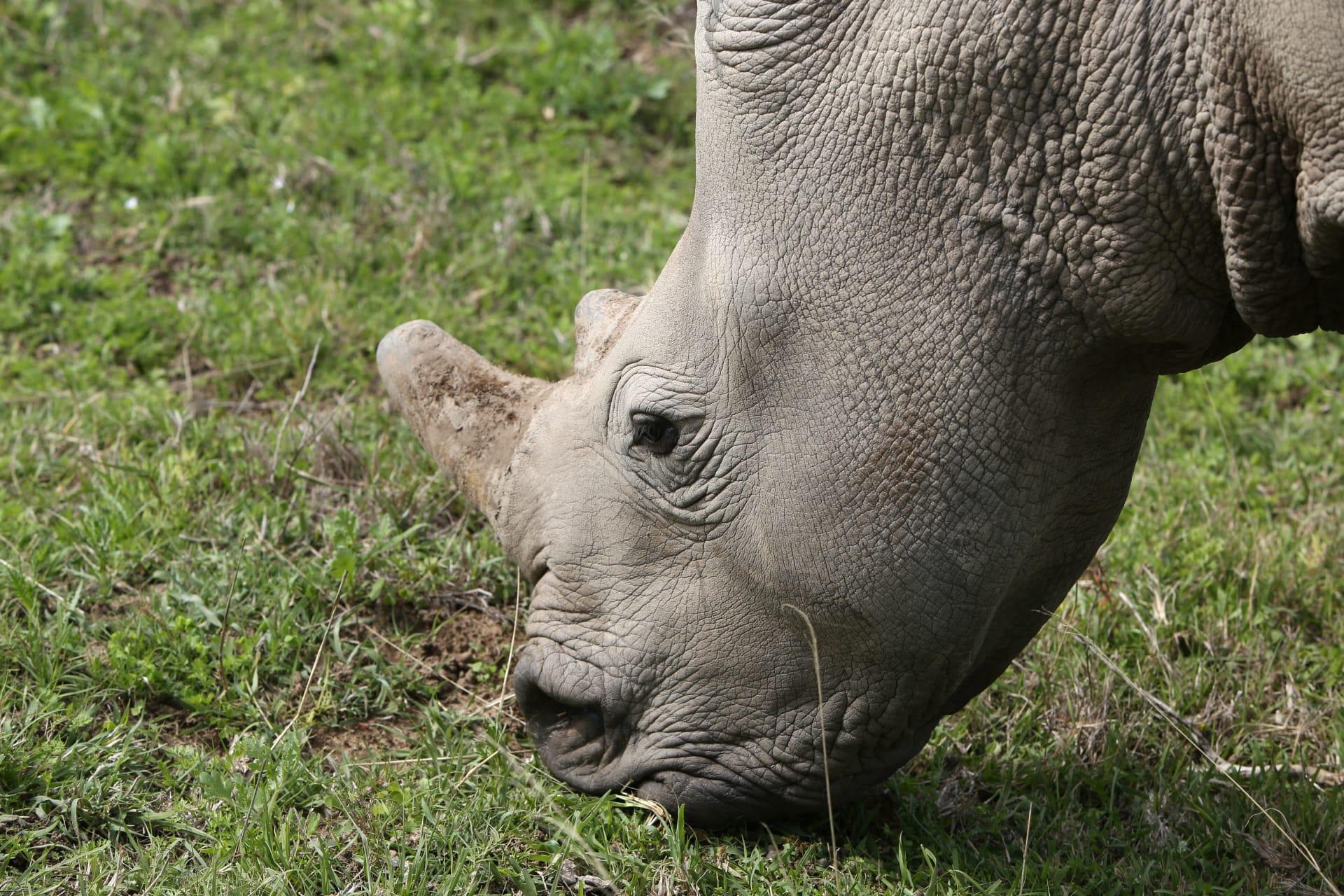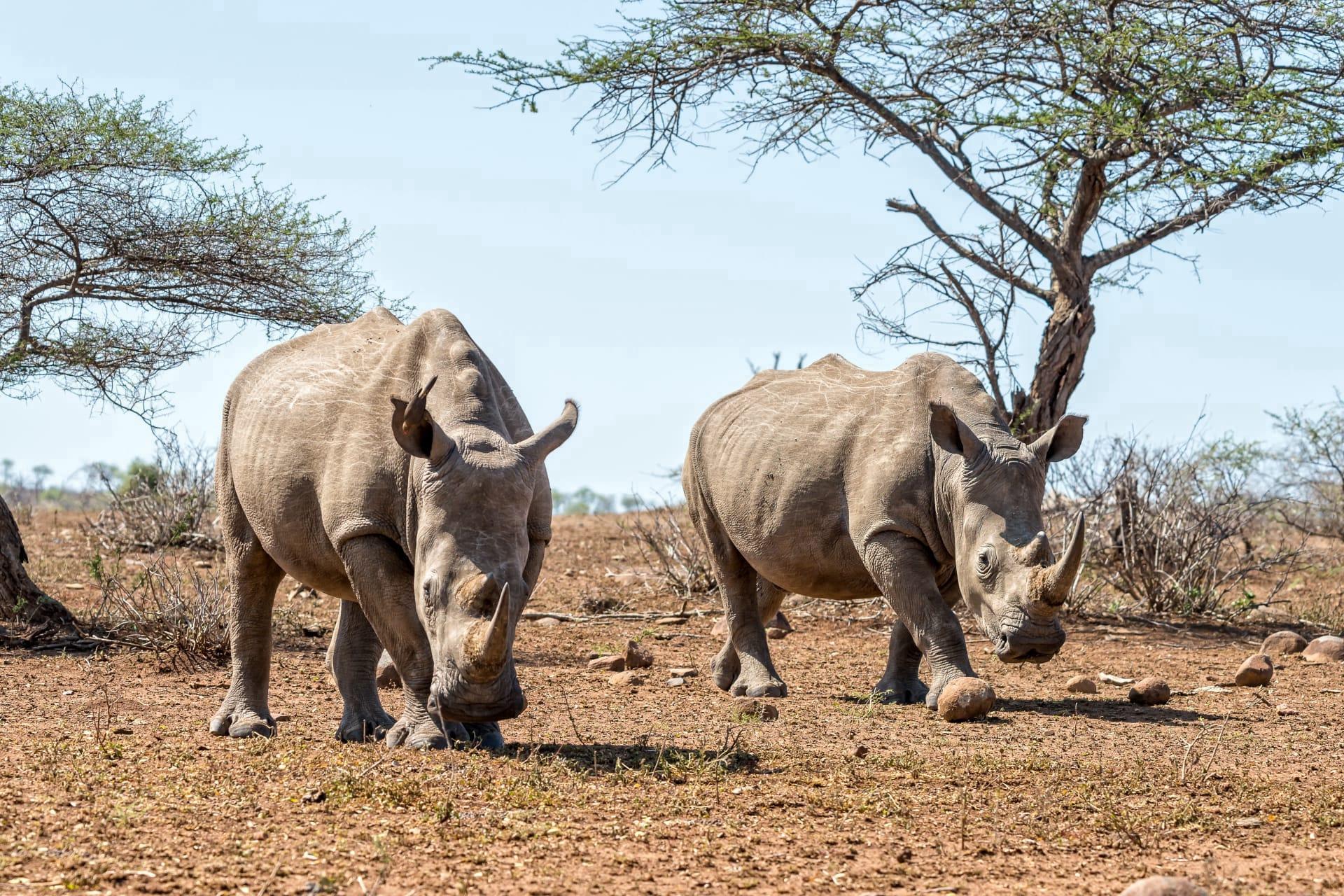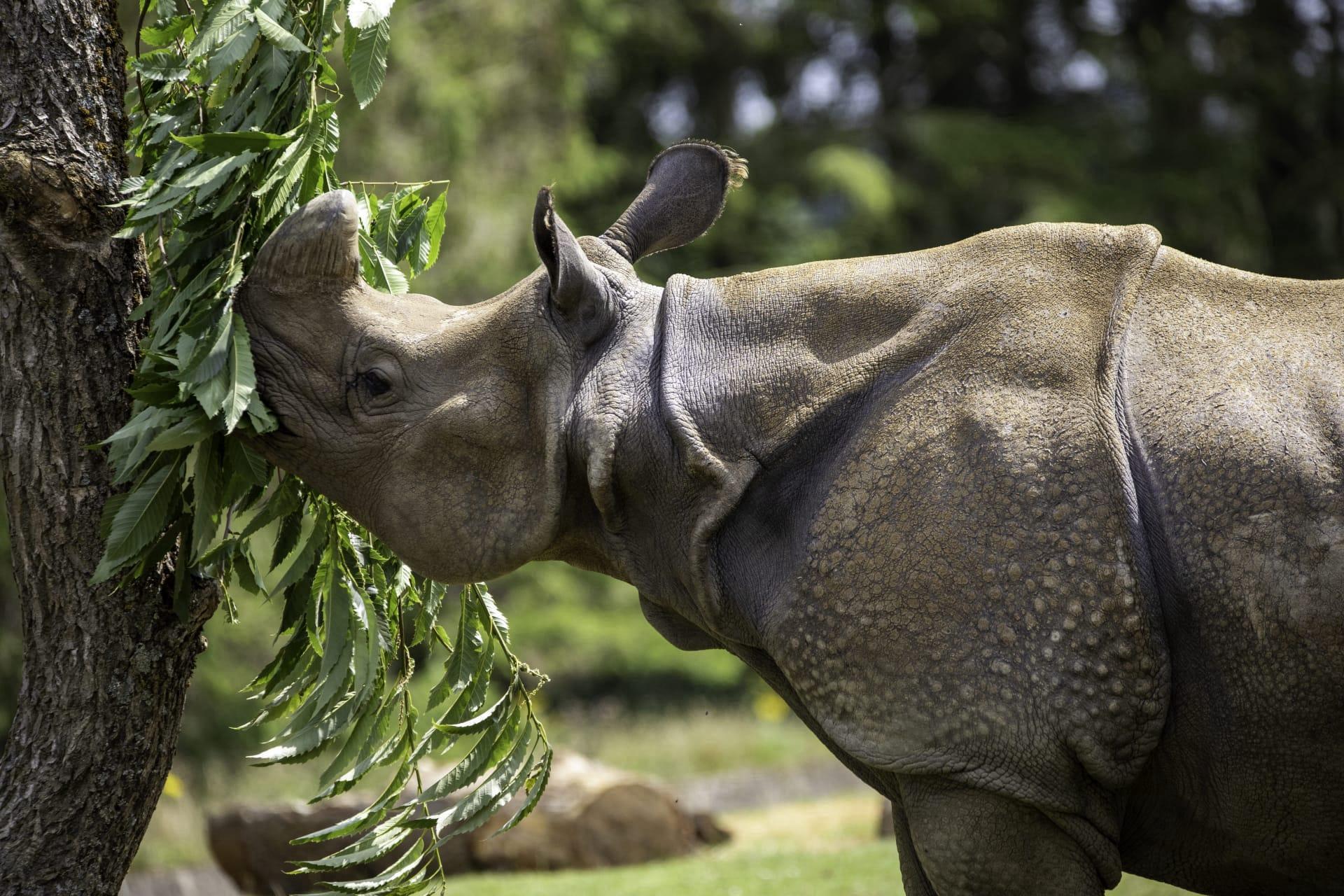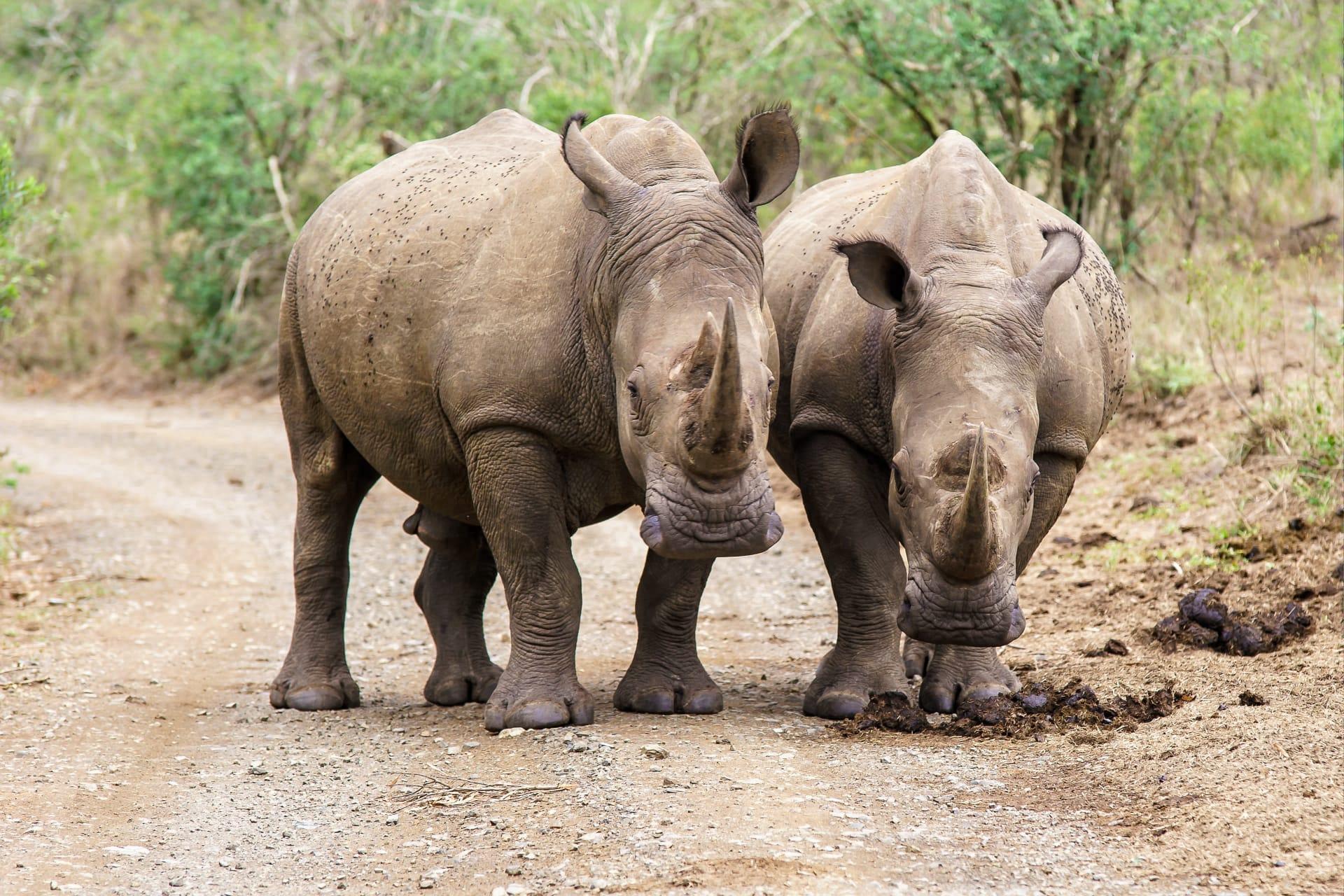Rhinoceros Characteristics
- Home /
- Mini Encyclopedia /
- Animal /
- Rhinoceros Characteristics
1
Rhinoceroses, commonly known as rhinos, are among the most impressive mammals due to their massive bodies and unique physical features. Adult rhinos typically weigh between 1,760 to 5,100 pounds, with some species reaching up to 7,920 pounds. They range in length from 10 to 12.5 feet and stand about 4.5 to 6 feet tall at the shoulder. Their skin is thick and protective, sometimes up to 1.5 inches in thickness. Rhinos have a lifespan of 35 to 50 years in the wild, with some living even longer in captivity.
The most distinctive organ of a rhinoceros is its horn, made of keratin, the same protein found in human hair and nails. Unique among mammals, the rhino's horn grows continuously throughout its life. The African species generally have two horns, while the Asian species mostly have one. These horns are not used for hunting, as rhinos are herbivores, but they play a crucial role in defense, territorial fights, and mating displays. The largest recorded horn was about 4.9 feet long.

2
Question: Why are rhinoceros horns so valuable and often targeted by poachers?
Answer: Rhinoceros horns are highly prized in certain cultures for their supposed medicinal properties and as symbols of wealth and status. Contrary to popular belief, there's no scientific evidence supporting the medicinal use of rhino horn. It's made of keratin, similar to human hair and nails, and has no proven health benefits. Yet, the demand, particularly in Asian countries, has driven illegal poaching. The high value of rhino horns, which can fetch tens of thousands of dollars per kilogram, continues to pose a significant threat to their survival.

3
Rhinoceroses, despite their large and hefty appearance, are surprisingly agile and can reach speeds of up to 30 to 40 miles per hour in short bursts. This speed is quite impressive considering their size. They are also capable of making sharp turns and quick stops. Rhinos have a relatively poor eyesight but compensate with acute hearing and an excellent sense of smell, which assists them in navigating their environment and detecting threats.
As herbivores, rhinos primarily feed on leafy plants, branches, shoots, and bushes. They play a critical role in their ecosystem by impacting the structure of vegetation. This foraging behavior can shape the landscape, benefiting other species. Rhinos use their lips to pluck food, with different species having differently shaped lips suited to their specific eating habits.

4
Rhinoceroses inhabit a variety of environments, including savannas, grasslands, forests, and wetlands, depending on the species. Their habitat choice is primarily influenced by the availability of water sources and food. Rhinos need a daily water intake and often spend time in mud wallows to cool down and protect their skin from sunburn and parasites.
Rhino reproduction is a slow process, contributing to their vulnerability. Females reach sexual maturity at 5-7 years, while males mature later, around 7-10 years. The gestation period is about 15-16 months, and typically, a single calf is born. Mothers are highly protective of their young, who stay with them for up to 3 years. This long dependency period and infrequent reproduction make population recovery a slow process, especially when facing threats like poaching.

5
Book: "The Rhino with Glue-On Shoes" by Lucy H. Spelman and Ted Y. Mashima. This book, published in the United States in 2008, is a compilation of true stories from zoo veterinarians around the world. One of the stories details the unique challenges of treating a rhinoceros in a zoo setting, providing insights into the care and management of these magnificent creatures.
Book: "Rhino: At the Brink of Extinction" by Anna Merz. Published in the United Kingdom in 1991, this book is written by a renowned conservationist. It tells the story of Merz's personal journey in establishing a rhino sanctuary in Kenya. The book focuses on the conservation efforts and the challenges faced in protecting rhinos from extinction, highlighting the delicate balance between humans and wildlife.